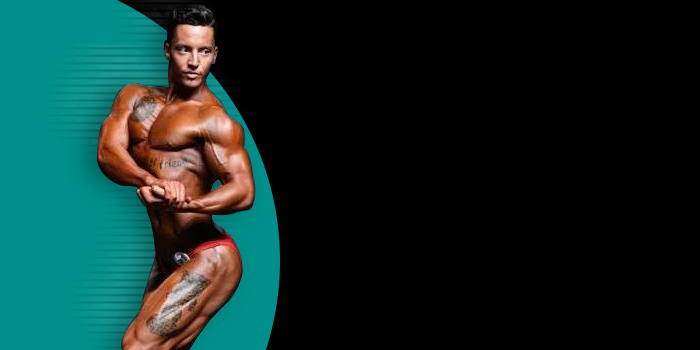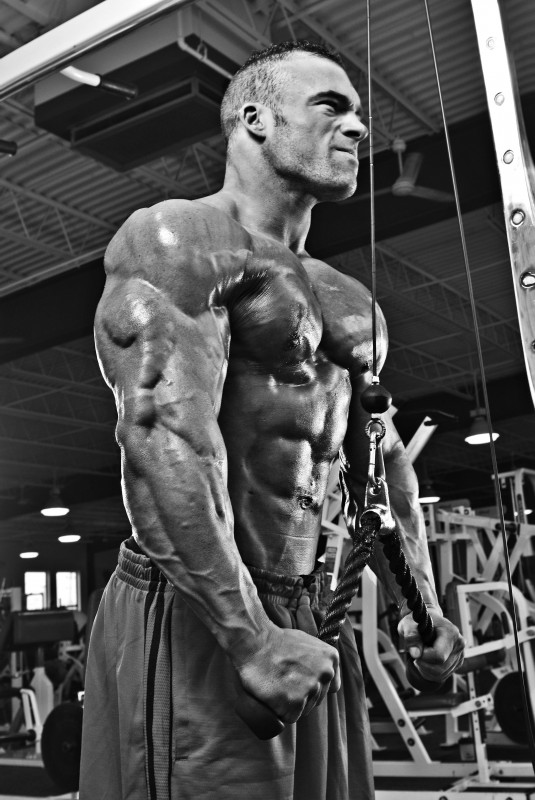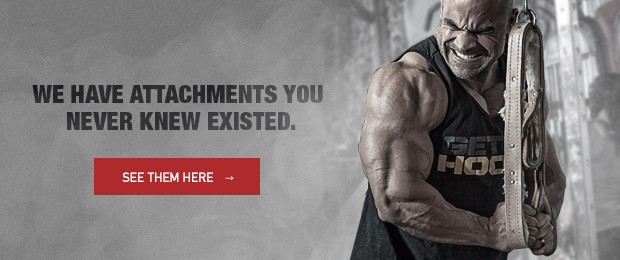
If you’re like 99% of lifters out there, bigger arms are an unspoken goal that will probably never be fully satisfied. I mean, who doesn’t want thick, powerful biceps that are backed up by hanging triceps that stretch the limits of your extra-smedium shirt?
Having big, strong arms goes beyond just something to flex and brag about. It’s a sign of health, vitality, a nod to your longevity, and it does absolute wonders for your confidence. All of these are fantastic benefits, and all you have to do to achieve them is train your arms intelligently.
Which is where many lifters take a terrible wrong turn.
How People Usually Approach Triceps — And Why They Don't Grow
Walk into the gym on any given day and without fail, you’ll see all the gym bros hammering away at seemingly infinite sets of preacher curls, hammer curls, cable curls, or whatever harebrained variation they can come up with on their quest for bigger arms. While the effort itself is somewhat admirable, the approach is less than desirable, and far from effective.
RELATED: 4 Weeks To Bigger Arms
What many lifters fail to consider when trying to build their arms is that, while giving all their lovin’ to their biceps, they’re sorely neglecting the muscle that makes up two-thirds of their arm. If its bigger arms you want, doesn’t it make sense to train the muscle that, you know, makes up the majority of your arm?
Call me crazy, but that’s where I’d start.
The small-armed hole only gets deeper as we dive beneath the surface. The layman’s approach to triceps training is about as piss-poor as the non-stop biceps assault.
An approach that’s most often characterized by:
- Infinite sets of rope pressdowns, typically using as much bodyweight as possible.
- Preference for heavy loading over quality reps, hence all of the body language to help move the load.
- Form is an afterthought. Have you seen how many people do pressdowns?
- Token sets tacked onto the end of chest work.
This is no way to build arms that turn heads in the street. Such a training approach fails to account for important muscle building co-factors such as exercise variety, strength curve manipulation, movement pattern variants, the law of specificity, and intramuscular tension, thus leaving you with biceps that really don’t want to do another curl, and triceps that are begging for proper stimulation.
The Cure for Poor-Pressdown-Itis
First stop for a moment and consider how your triceps are made up and how they function. Your triceps account for two-thirds of your arm’s mass, in most cases they’re incredibly strong muscle (relatively speaking), and they play a huge supporting role in pressing movements. Which means, if you build your triceps, you’ll indirectly be building your bench as well.
Now, for your triceps to grow optimally, you need to place a degree of thought to how you train them. Different angles need to be taken into account, to help hit both the long and short heads. Different grips (neutral, pronated, and supinated) should be taken advantage of to alter where the focal point of each contraction occurs. Your exercise choice should be done with intelligence, variety, and thought for the end goal. Believe it or not, there are more exercises at your triceps disposal than just pressdowns.
First up, you have exercises that emphasize the stretch position:
- Skull Crushers
- Overhead Extensions (from low, mid, high pulley)
- Incline Dumbbell Extensions
Then there are contraction-based exercises that you can implement:
- Cable/Dumbbell Kickbacks
- Pressdowns (with all manner of grips and attachments)
- Hex Presses
Lastly, there are mid-range exercises you can use to put the finishing touches on your soon-to-be terrific triceps:
- Dips (assisted, bodyweight or between benches)
- Tate Presses
- Close Grip Bench Press
These aren’t the only exercises for each category, just some that are easy to implement, joint-friendly, and will surely help you grow.
My Favorite Triceps Movements
For any body part, everyone has movements that they absolutely love. Often these are the ones that you’re strongest in, but it also often means that you respond quite well to said movements. I’d be remiss if I didn’t add my own favorites into the mix — with a few tweaks for maximum blood flow and muscle damage, of course.
1. Rope Pressdowns
Despite ranting about these earlier on, I believe they’re incredible when executed properly. Instead of doing these in a traditional, strict, upright fashion with your elbows by your side, try this instead: Grab the rope, then walk back so you’re a few feet away from the stack. Hinge forward at your hips and pull your elbows in until you’re able to pressdown in front of your face. Bonus points if you let your shoulders protract (this absolutely roasts the origin point of your triceps).
2. Tate Presses
Traditionally these are executed with dumbbells. You push your elbows out to the side as you lower the weight, then drive them together as you flex your triceps to bring the weight back up. Use Kettlebells. Doing so makes it more joint friendly, changes the strength curve, and makes it just feel like a smoother movement.
3. PJR Extensions
These are fantastic as a finisher or when you’ve got a skin-splitting arm pump already. Lay perpendicular with just your upper back on the bench. Get the dumbbell behind you, as if you’re going to do a pullover, then perform extensions with a little bit of body language. Make sure you get deep into the stretch, and come up into a good contraction.
4. Skull Crusher/Pullover Hybrid
These take the proverbial cake for being my favorite, most recent discovery in triceps movements. Load up an EZ bar and set up as if you’re going to perform traditional skull crushers.
Triceps Sample Session
Before you head into the wilderness of the gym to work on bringing your triceps up to speed, I’ve written out an accessory triceps session to help you quickly bring them up in both size and strength. You can use this in a few different ways:
- Add it to the beginning or end of your chest or back work.
- Start your arm sessions with this (taking advantage of the prioritization principle) before moving onto biceps.
- Head to the gym on a rest day and do only this.
Have at ‘er.
A1. Rope Pressdowns (20, 15, 12, 10, 8)
Use the same form has discussed above. Pyramid up in weight on each set and flex hard for one second in the contracted position.
B1. Straight Bar Pressdowns (4x12-15)
Contrary to the form for the rope pressdowns, I want you to execute these with strict form. Stand close to the stack, keep your elbows pinned at your sides, and flex hard for two seconds in the contracted position.
B2. Close Grip Bench Press or Dips Between Benches (4x6-8)
Regardless of exercise choice, use a slow eccentric (four to five seconds), pause for one second in the bottom, and flex your triceps hard as you drive up and into the contraction. If you’re close grip benching, push it in terms of load.
B3. Seated Cable Overhead Extensions (4x15-20)
Keep your elbows by your ears, arch your chest a bit to get a deeper stretch, and pump these out. Focus on constant tension here. No lockout.
C1. PJR Extensions (4x20-30)
Perform these as described above as a finisher. Remember to focus on stretch and contraction for each rep.
If you have lagging, weak triceps, this triceps circuit performed before (because the law of specificity) your scheduled session will go a long way towards bringing them up.











